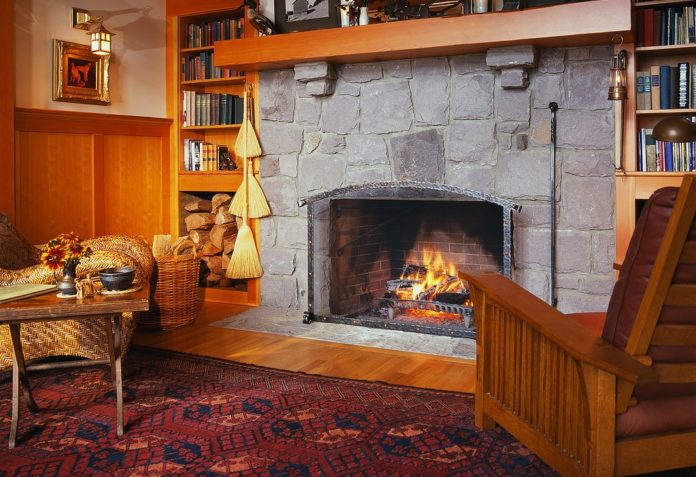Around the world, people switch their central heating on in the month of September and they use it until the month of April. This goes hand in hand with the clocks tending to go back, decrease in the level of temperatures and fuel payments.
Generally, heating our houses accounts for over 75 % of energy consumption in our homes. Therefore if you can reduce this amount while still continue keeping your house warm enough not only will it cut energy bills, but it will also help reduce carbon which is very toxic.
According to a recent study, more than 2.4 million families in the United KINGDOM ARE IN THE POVERTY OF FUEL. This means that about 12 % of British households are not in a position or they cannot afford to keep their homes warm. But while this problem is so significant, not all the solutions that require or need to be costly and complex. Under the ECO initiative an additional scheme was created, the Affordable Warmth Scheme which might provide you with a central heating grant if you qualify. First time central heating grants are available from the government as part of the ECO initiative as this works towards reducing fuel poverty throughout the UK.
Nobody around the world is willing to spend his or her money when it comes to heating bills. Therefore you need to use simple ways that will help you reduce your bills on heating without spending too much. Some of the options available will prevent heat loss while others will add more heat to your house and others will keep the heat where you require it to be. Anyway the first thing you need to do is to check the flooring grapevine to see some latest products that will guarantee you warm of your house.
This article guides you through to simple ways of keeping your house warm especially during the winter seasons. Read on and be enlightened.
Use Curtains

Remember heat from sunshine is free of charge and we encourage you to to take advantage of it. During the day, make sure you open your curtains to let the sunlight in. Make good use of this free heat. During the evening hours when it is getting dark make sure you shut your curtains. This will act as another insulation layer which will keep your house rooms warm. At the same time make sure your house does not have any gaps or leaks. This will ensure that the warm heat stays in and the cold air does not penetrate into the house through those gaps and leaks. This will also help to reduce condensation inside your house.
Use Timers on the Central Heating System
A team of Sustainable energy will advise you that you have to programme your boiler so that it can turn on the heating some few minutes earlier before you wake up in the morning. Remember that low temperatures are cheaper than higher temperatures. This is due to the fact that your boiler will heat at a constant speed regardless of whether the thermostat is set at 10-degree centigrade or at 20-degree centigrade. It is also advisable not to make a mistake and leave your heating system on low temperatures all daylong because you will be paying for energy and heat bills that you do not use.
Move the Sofa

Somebody might feel good to have his or her favorite sofa seat infront and near the radiator. Remember that it will be absorbing more heat that you could need to warm your house. If you can consider keeping your sofa away from the radiator, heat will circulate freely within your rooms. This will also apply with your drying clothes and curtains. Ensure you keep them away from your radiator. In doing so, you will get the best from your heating system.
Maximize the Insulation
According to a recent research, it is estimated that about 30 % of heat in the house is lost through the roofs. You can reduce this by installing 30 cm of insulation throughout the loft. It is worth to see that what is going on in the walls, that are one-third of heat in the uninsulated house, is lost in this way. Though this is not cheap to install as compared to loft insulation, cavity insulation can save more than $20 per annum in heating energy heating bills. It is also a wise idea to check with your energy supplier to find if they could be having insulation schemes running which will mean free or cheap installation.
Wrap up Warm
In case you might be having a hot water tank, ensure you lag or insulate it properly. This will ensure the water will remain warm for a long period of time, therefore, reducing heating costs. Insulating a water tank can save upto $ 50 per annum on heating bills.
Turn Down Your Dial

This could seem like a counter-intuitive. According to the chairman of the world health organization, previously had recommended a living room temperature to be at 21 degrees centigrade. This was later revised by the public health of England to be 18 degrees centigrade. According to different studies, if you can turn your thermostat down, for instance by 1-degree centigrade, can reduce the heating bills by approximately 10 %. Therefore it is advisable to you keep your dial at 18 degrees centigrade to save more money. At the same time, you will avoid the negative effects of a cold house.
By installing thermostatic radiator valves
According to a research which was carried out by Salford University, showed thatinstalling thermostatic more radiator valves and heating controls save energy of up to 40 % as compared to houses without thermostatic radiator valves and controls. This allows you to programme the heating to come on at a predetermined time, and therefore you will use heat when you require it.
Reflect the Heat
Use radiator panels to reflect heat. These radiator panels are not expensive and they are simple to install. The panels ensure that the heat energy from the radiators is warming up the entire rooms and not the walls. They reflect the heat energy back and forth into the entire room.
Upgrade the Boiler

If the boiler is very old, for instance, more than ten years old, it is a good time to replace it with a more efficient model that uses less energy to generate heat.
The above is the simple ways you can use to keep your entire house warm without spending too much on investment.


















